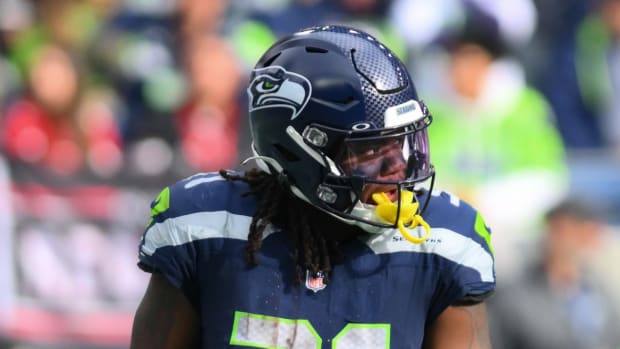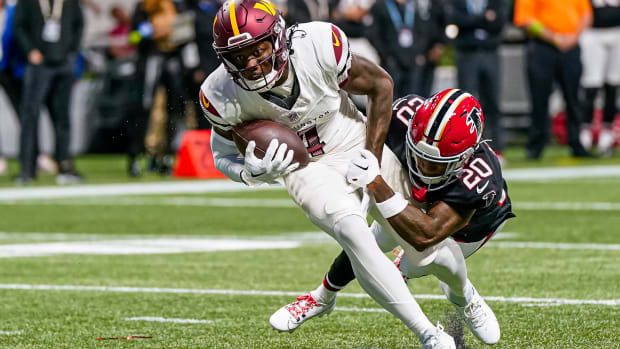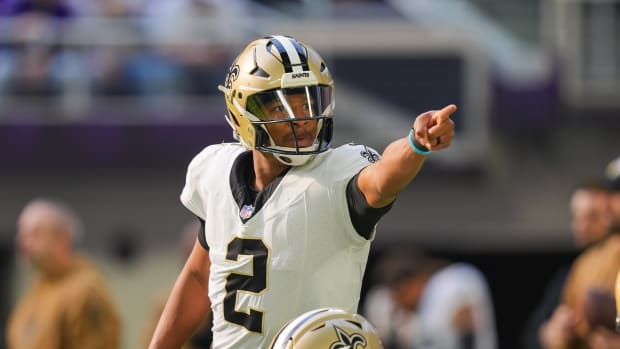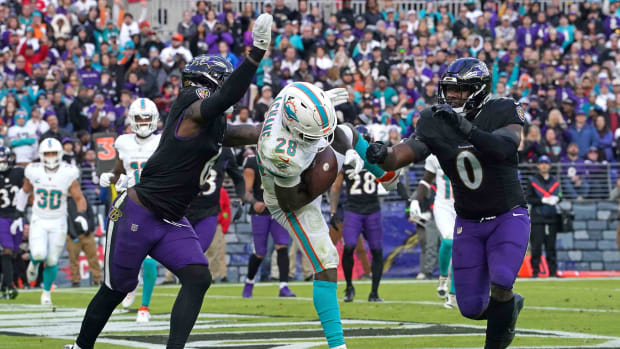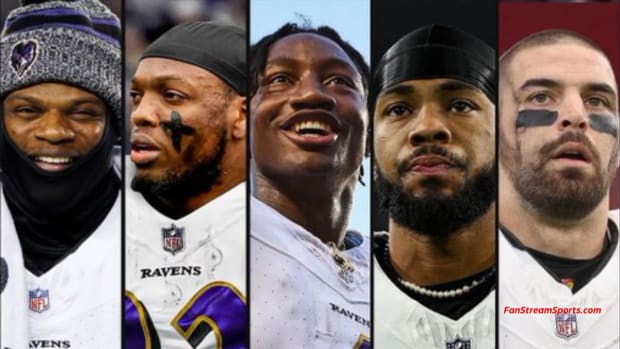What is the NFL's concussion protocol?
The NFL has specific guidelines for handling players who may have been concussed, but you might not have known it by watching the league's season opener between the Broncos and Panthers.
The league's concussion protocol was scrutinized after Panthers quarterback Cam Newton sustained several big hits to the head without being removed from the game to be evaluated for a head injury. Though the league concluded after the game that proper protocol had been followed, the NFL drew criticism—including from Newton's father—for appearing to fail to properly care for a potentially concussed player.
So what exactly is the NFL's concussion protocol?
In 2013, the NFL announced the introduction a set of concussion assessment guidelines, which were developed by the league’s Head, Neck and Spine Committee in an attempt to better detect concussions during practices and games. The policy includes guidelines for sideline evaluation, as well as rules on preseason education, baseline testing and the establishment of personnel to conduct concussion evaluations. The protocol also includes a definition of a concussion and a list of symptoms, but notes that the list is not exhaustive.
Here's a closer look at the NFL's concussion protocol—including what it purports to do and where it's falling short.
• BISHOP: Crushing blows to Cam Newton expose how poorly the NFL treats one of its biggest stars
Policy
The policy is implemented in stages, beginning with education and information gathering before players even set foot on a football field.
Preseason
The protocol mandates that players and team staff should be educated on concussions before the season and advised on the importance of promptly reporting concussion symptoms. A baseline neurological exam is also taken during the preseason.
In-game: Identification
Teams have their own medical staffs, but a class–action lawsuit by former players against the league alleged team doctors didn't properly educate players on the risks of playing while concussed. The protocol creates two positions specifically to aid in identifying and diagnosing concussions.
Unaffiliated Neurotrauma Consultant: A physician who is not affiliated with any NFL team is assigned to each team to monitor games from the sidelines, identifying concussion symptoms, noting when hard hits warrant concussion evaluation and working with the team physicians to conduct those evaluations. The UNC’s role is advisory in nature, as the final call on diagnosing a concussion and sending a player back into a game lies with the team doctor.
Booth ATC: Athletic trainers sit in stadium booths during all games to spot potential concussions in players from both teams. The spotters can review game film to identify plays potentially resulting in concussions and can call "medical timeouts" to relay that information to the medical personnel on the sidelines so that further evaluation can be conducted. The spotters have been used since the end of the 2011 season, and in 2016 the NFL increased the number of spotters per game from one to two.
At minimum, there are 29 medical professionals at every NFL game.
In-game: Evaluation
If a player shows or reports concussion symptoms, it is mandatory that he is removed from the game so the medical team can conduct an evaluation. If he is found to have a concussion, he is prohibited from returning to the game or practice that day.
Signs of a concussion, according to the league's protocol, include the following: loss of consciousness, lack of balance, holding head after contact, a look of confusion, getting up slowly, a blank look or a visible facial injury in combination with any of the other factors.
According to the Madden Rule, which was introduced in 2011 and remains an official part of the league's concussion protocol, a player who has been diagnosed with a concussion must leave the field and immediately be escorted to a locker room or training room. That player is not permitted to return until medically cleared.
If the medical staff concludes that the player did not sustain a concussion, then the video replay must be reviewed prior to the athlete returning to play.
Post-game
A concussed player is monitored daily and may not return to football activities until he has returned to his baseline cognitive function. Then the team doctor and an Independent Neurological Consultant must both clear him for return to play.
New this year, the NFL can impose penalties after games if it is determined that teams failed to remove concussed players from games. Teams can be fined up to $150,000 for a first violation, no less than $100,000 for a second violation and can even lose draft picks.
Amid the calls to better protect QBs, beware the unintended consequences
The protocol isn't foolproof
The catchall phrase "when in doubt, leave him out" hasn't prevented potentially–concussed players from remaining in games.
For example, Cam Newton absorbed at least four helmet-to-helmet hits during the Panthers' season opener against the Broncos. On the fourth, he laid motionless on the field for a moment before getting up and returning to play. He was never evaluated by a trainer or doctor.
A medical timeout was not called because the league requires "clear visual evidence" that a player "displays obvious signs of disorientation or is clearly unstable" for play to be stopped. The words "clear visual evidence" appear in bold in the NFL game operations manual. After the game, the NFL released a statement saying medical personnel had determined during the game that no such evidence was present.
Newton was ultimately not diagnosed with a concussion, but there have been instances when the a lack of caution results in a concussed player remaining on the field. In November 2015, Rams quarterback Case Keenum clearly sustained a concussion, but the team failed to remove him from the game. All of the league's supposed mechanisms for player safety failed. No one was punished.
Game officials were seemingly more careful after Bills quarterback Tyrod Taylor got his head sandwiched between two Jets defenders on a sack in Week 2, pulling him from the game for evaluation because he appeared "woozy."
Only time will tell if this year's updates to the concussion protocol, and the ongoing concern over the lasting impact of head injuries, will lead the league to fully adopt the mantra, "when in doubt, leave him out." At the moment, that doesn't always happen.

































